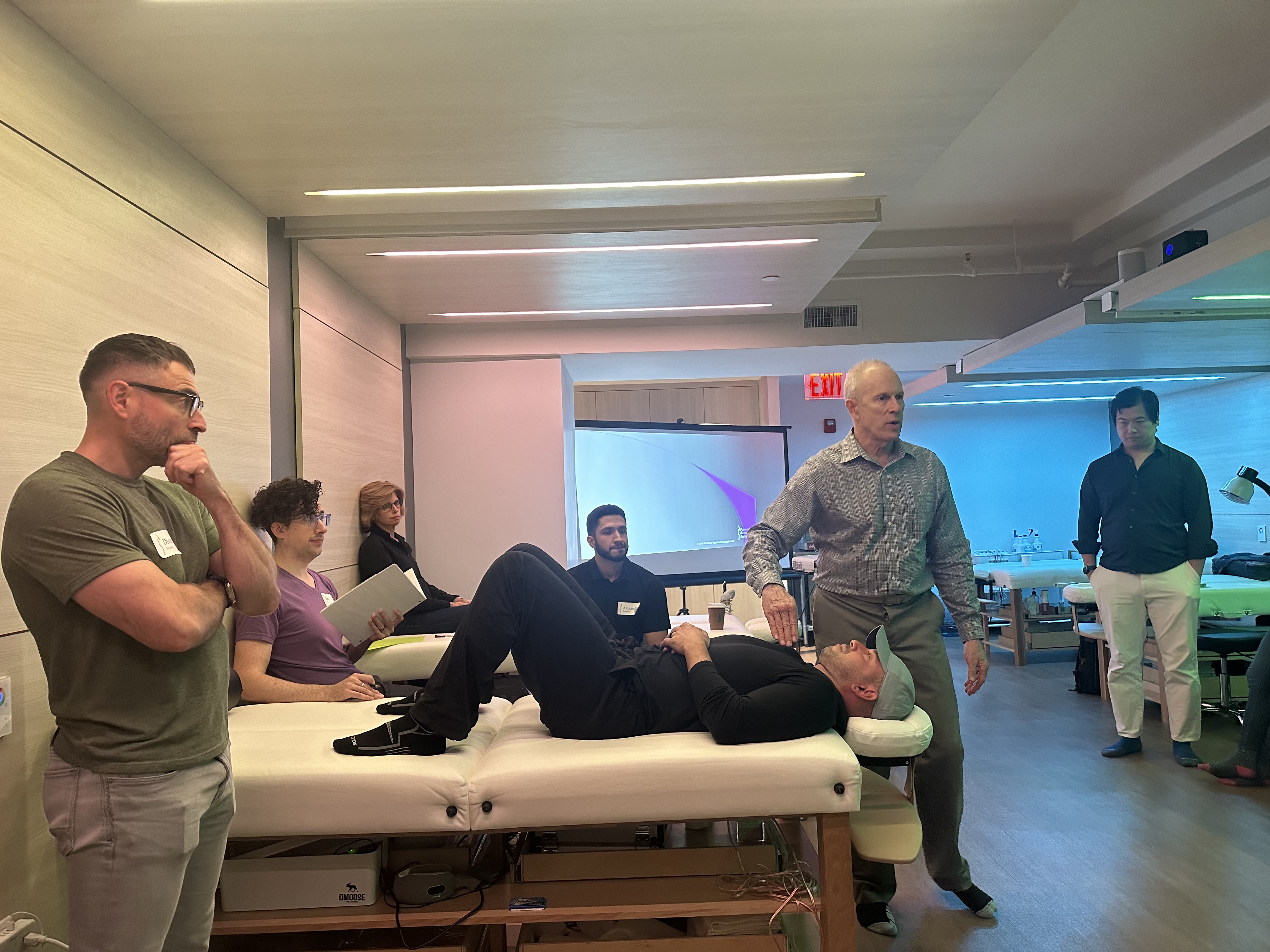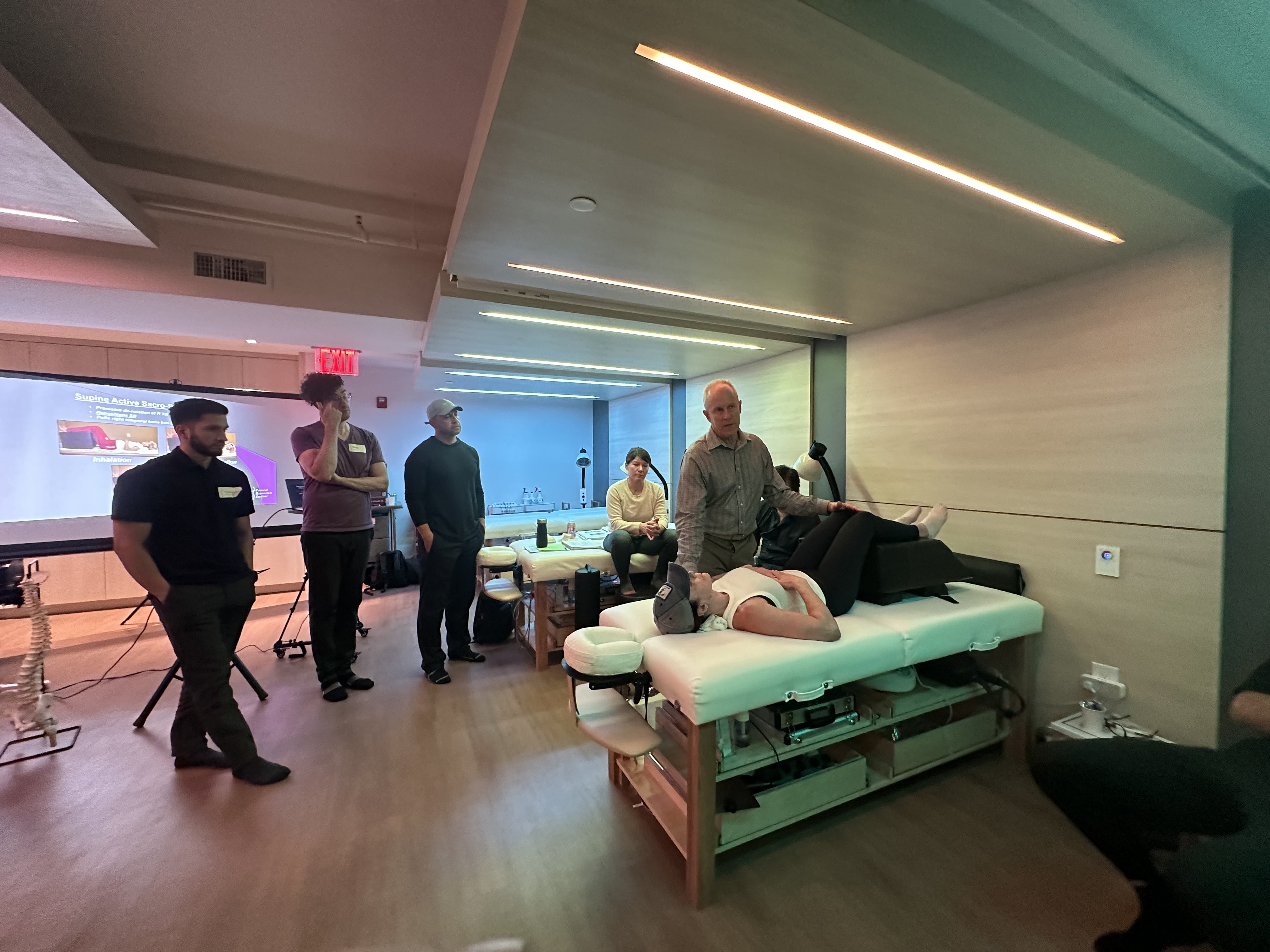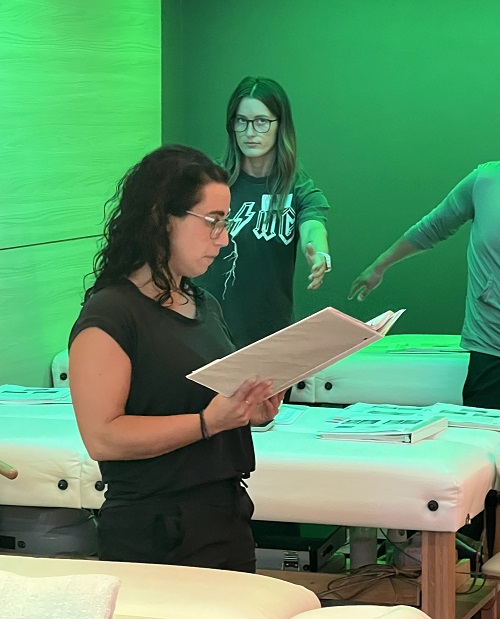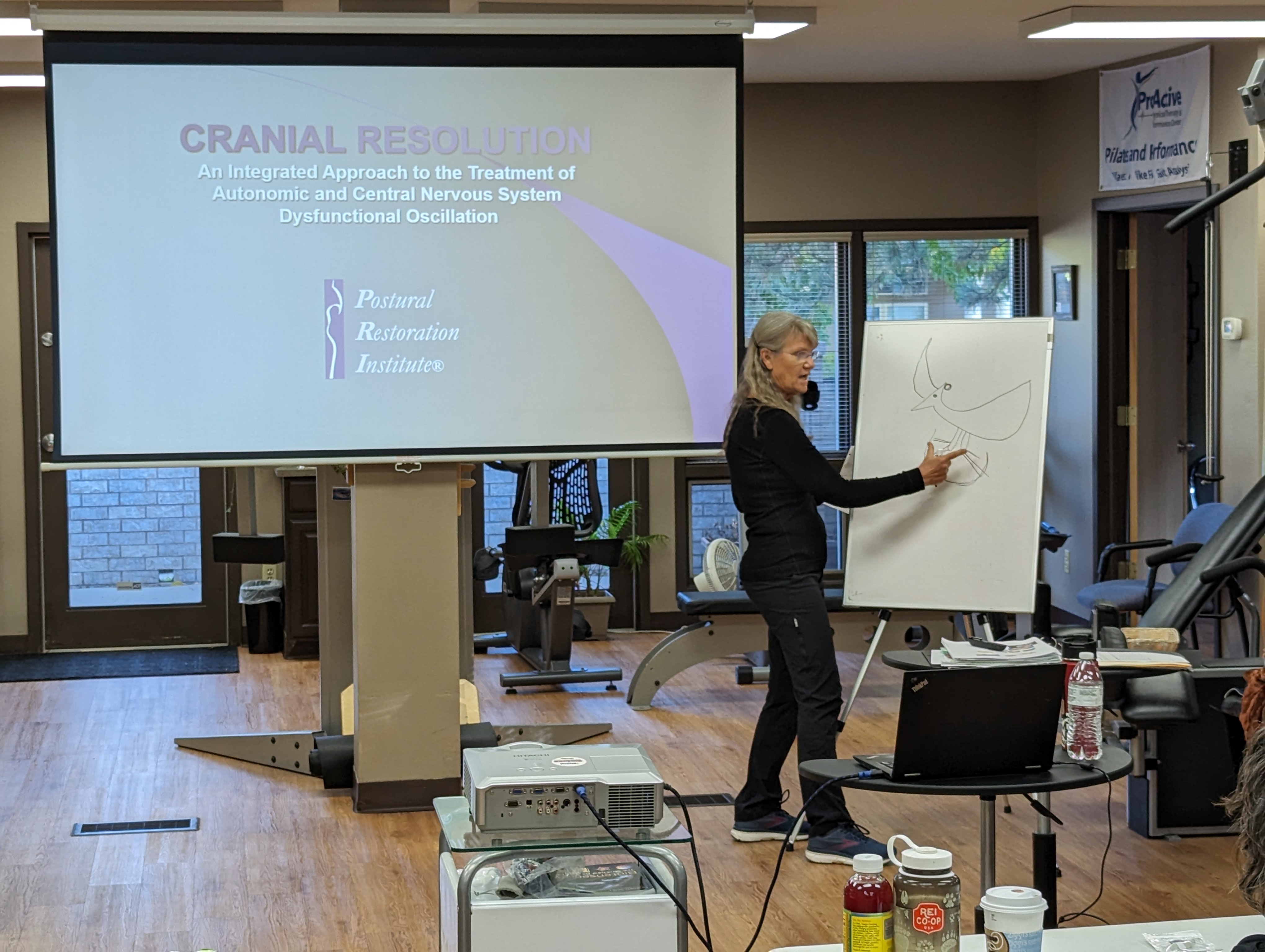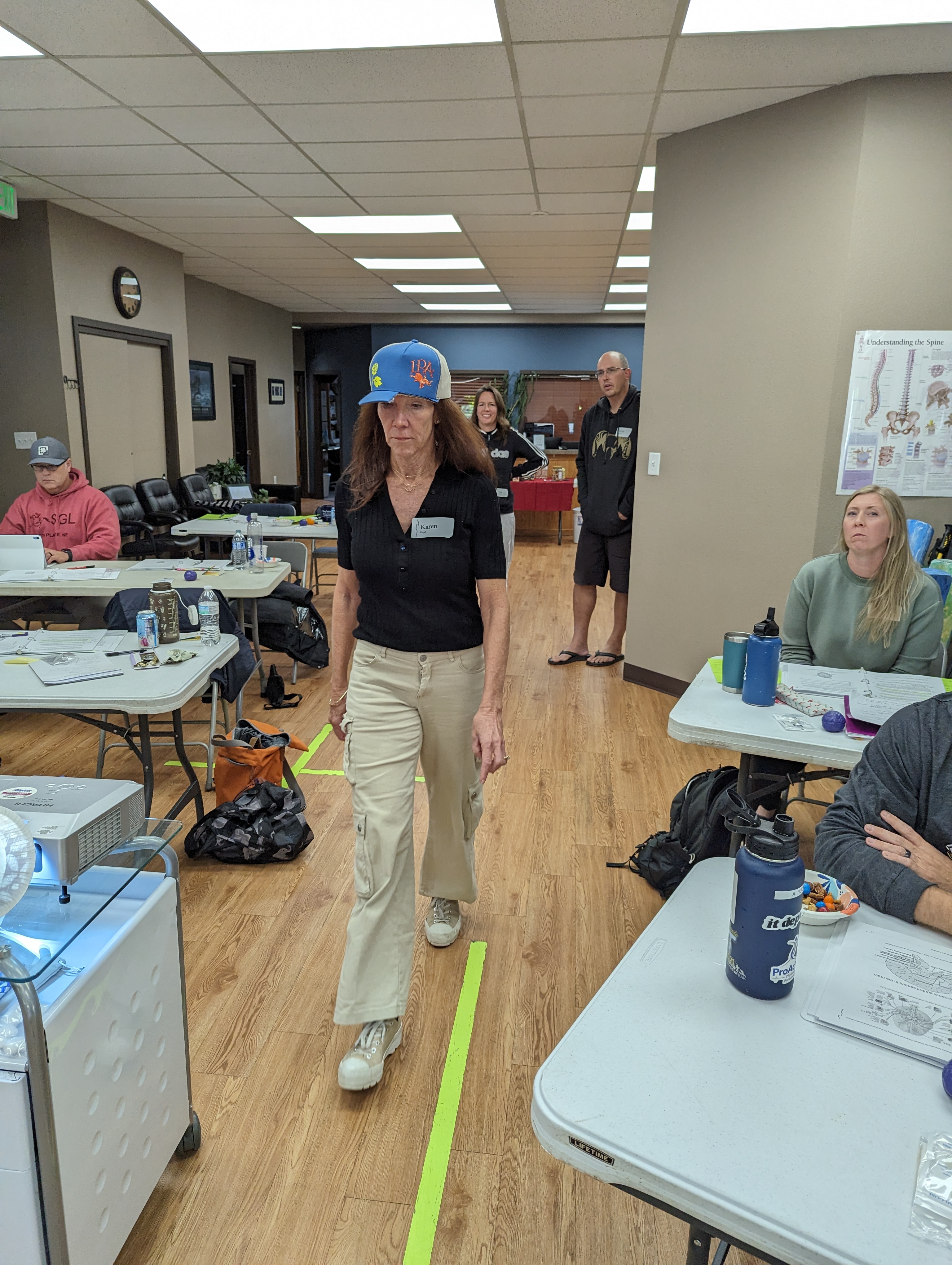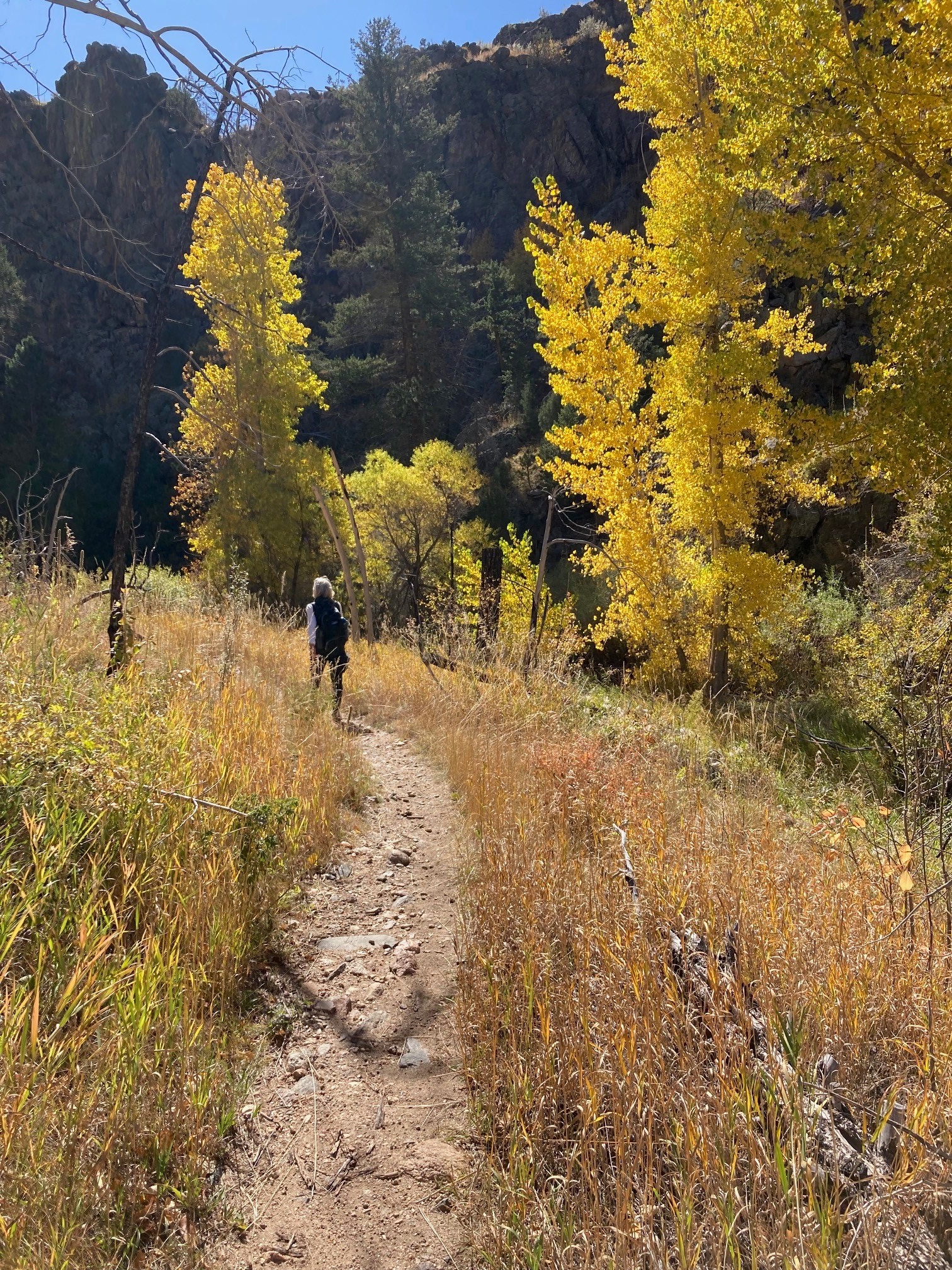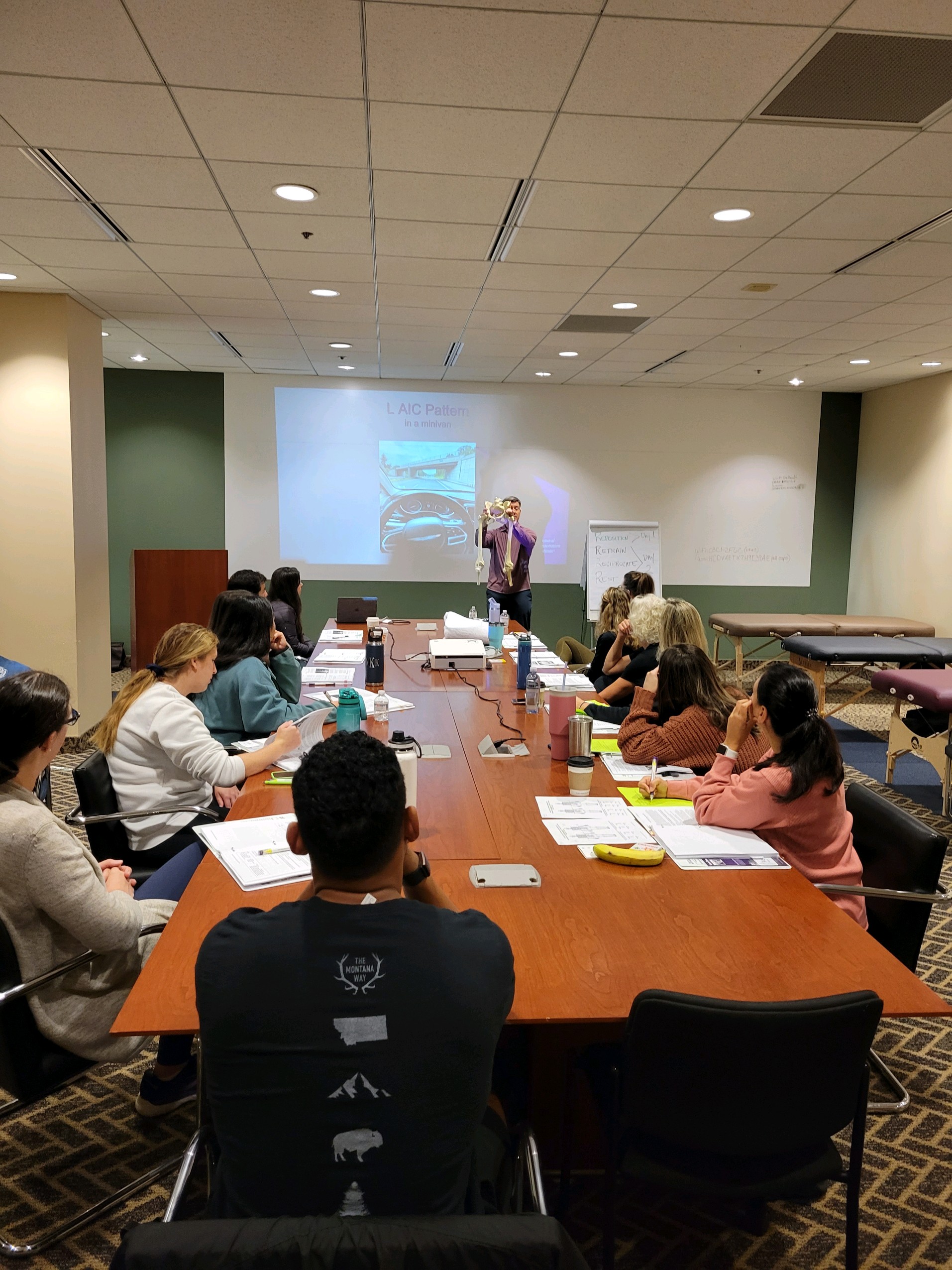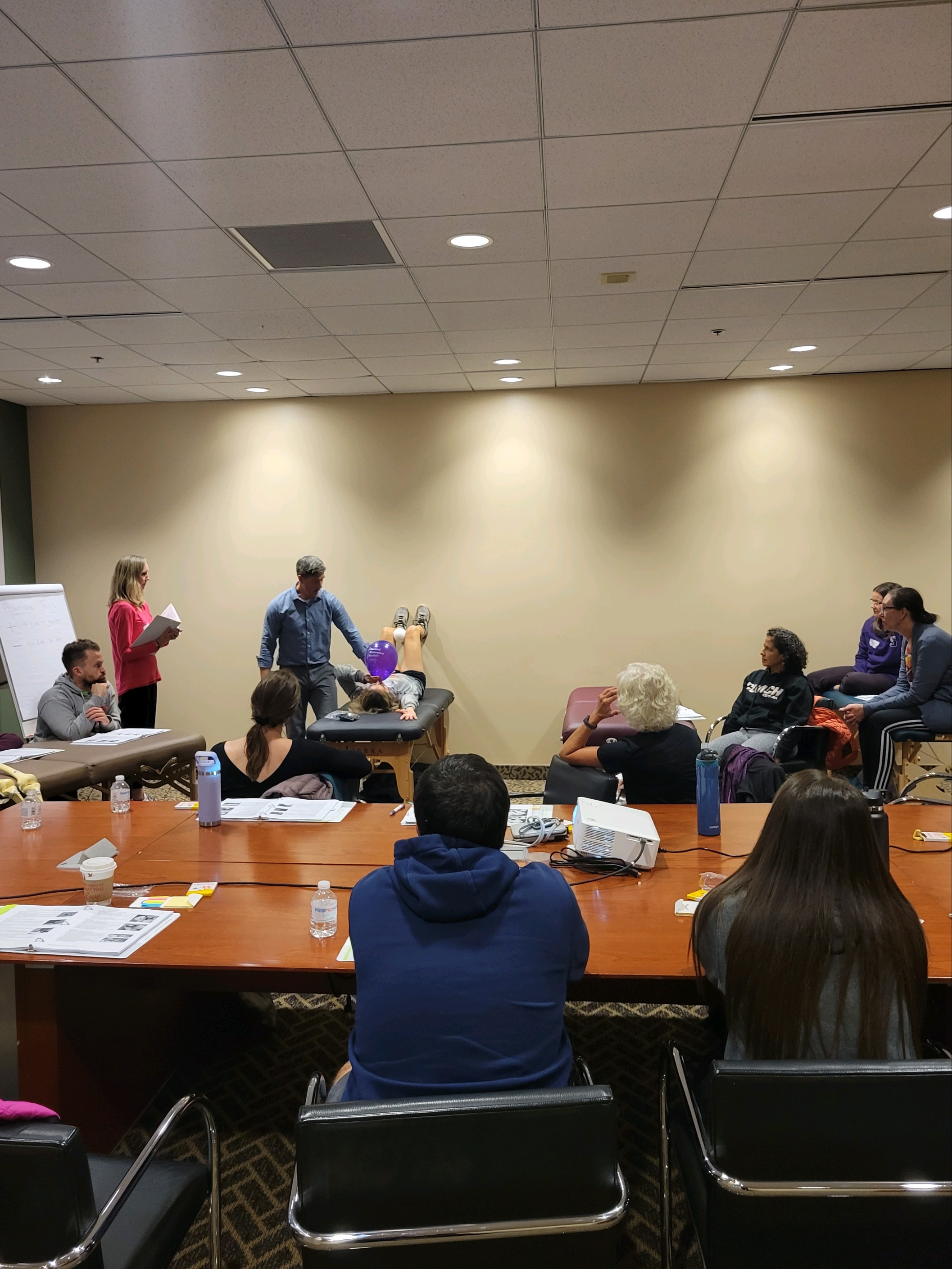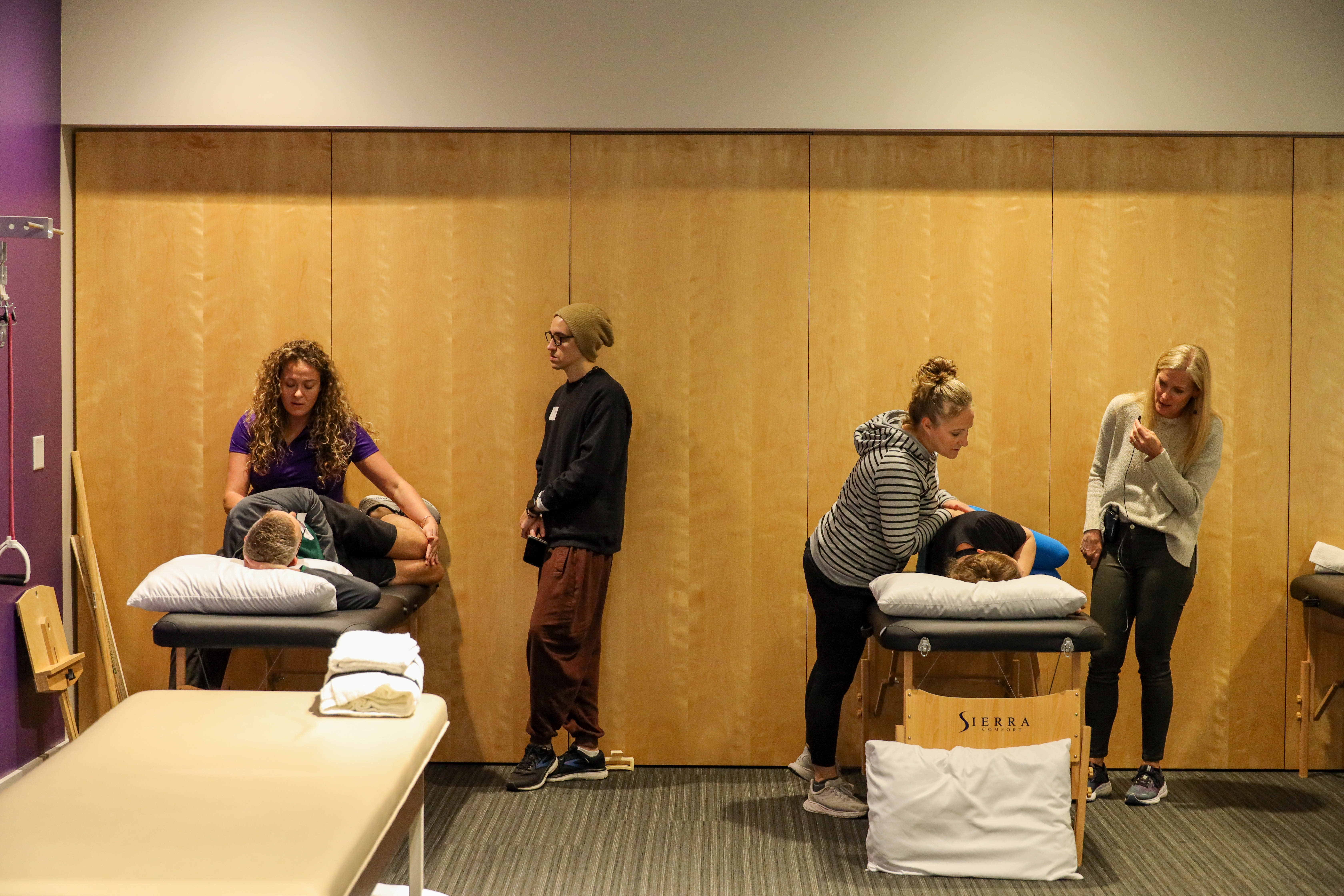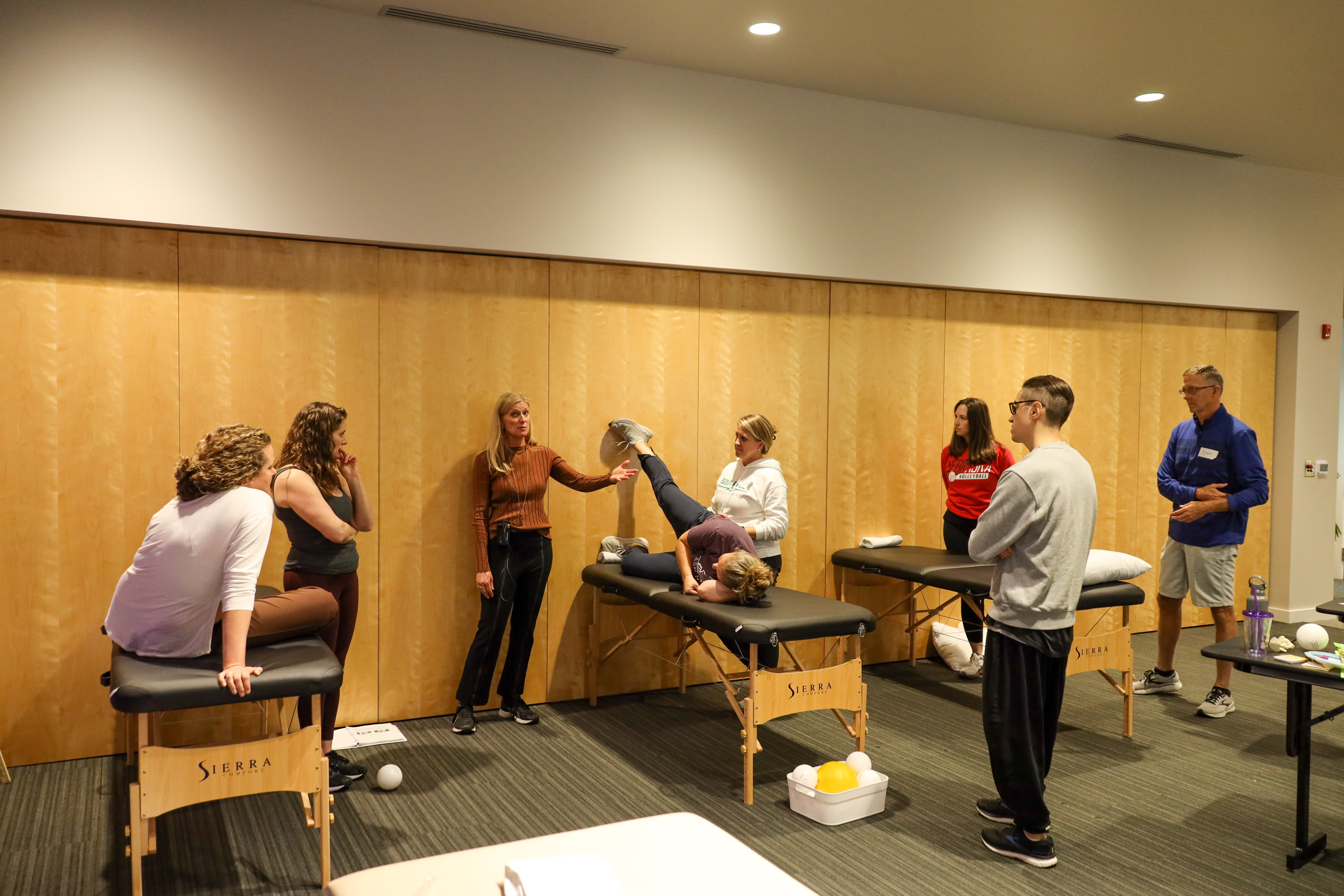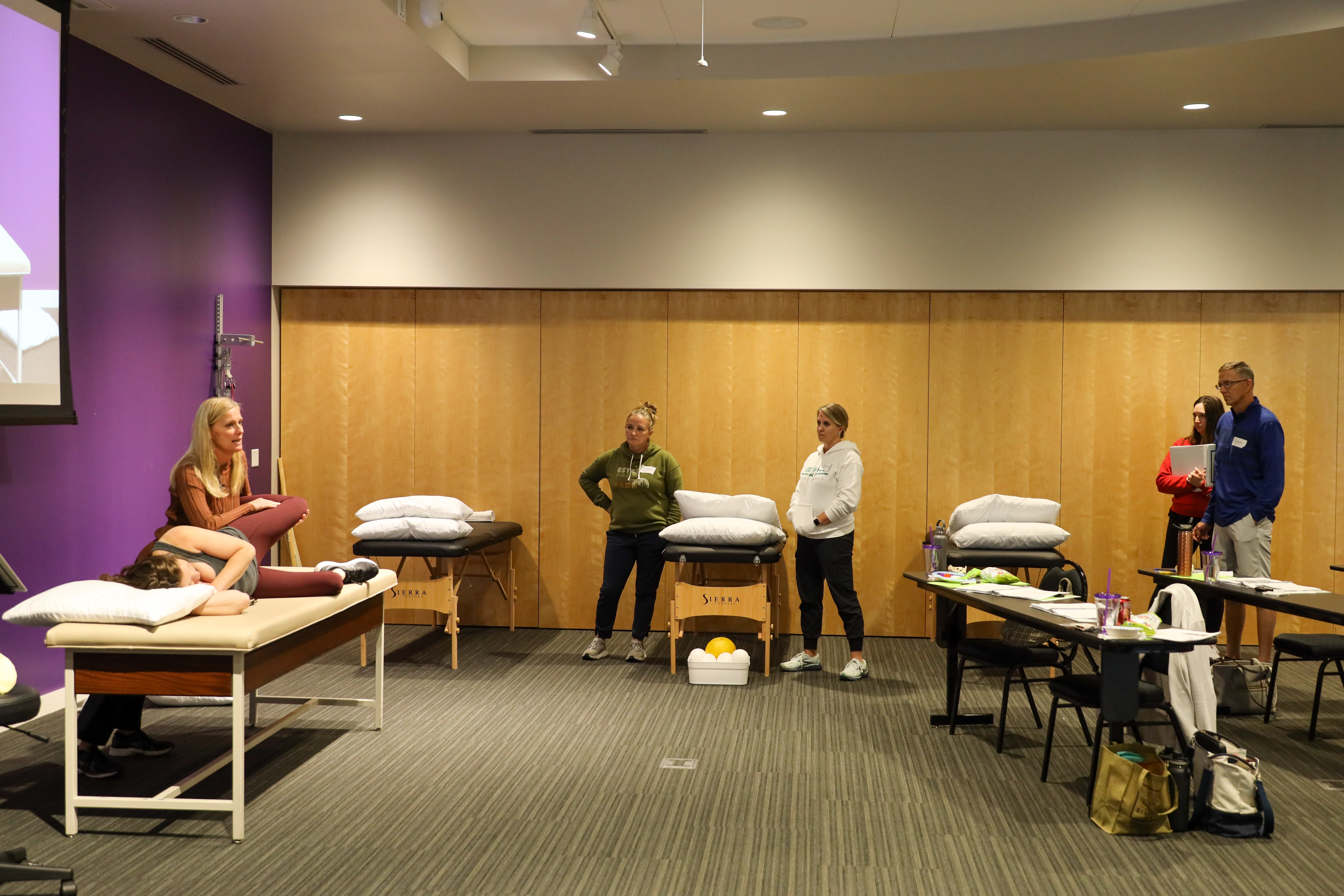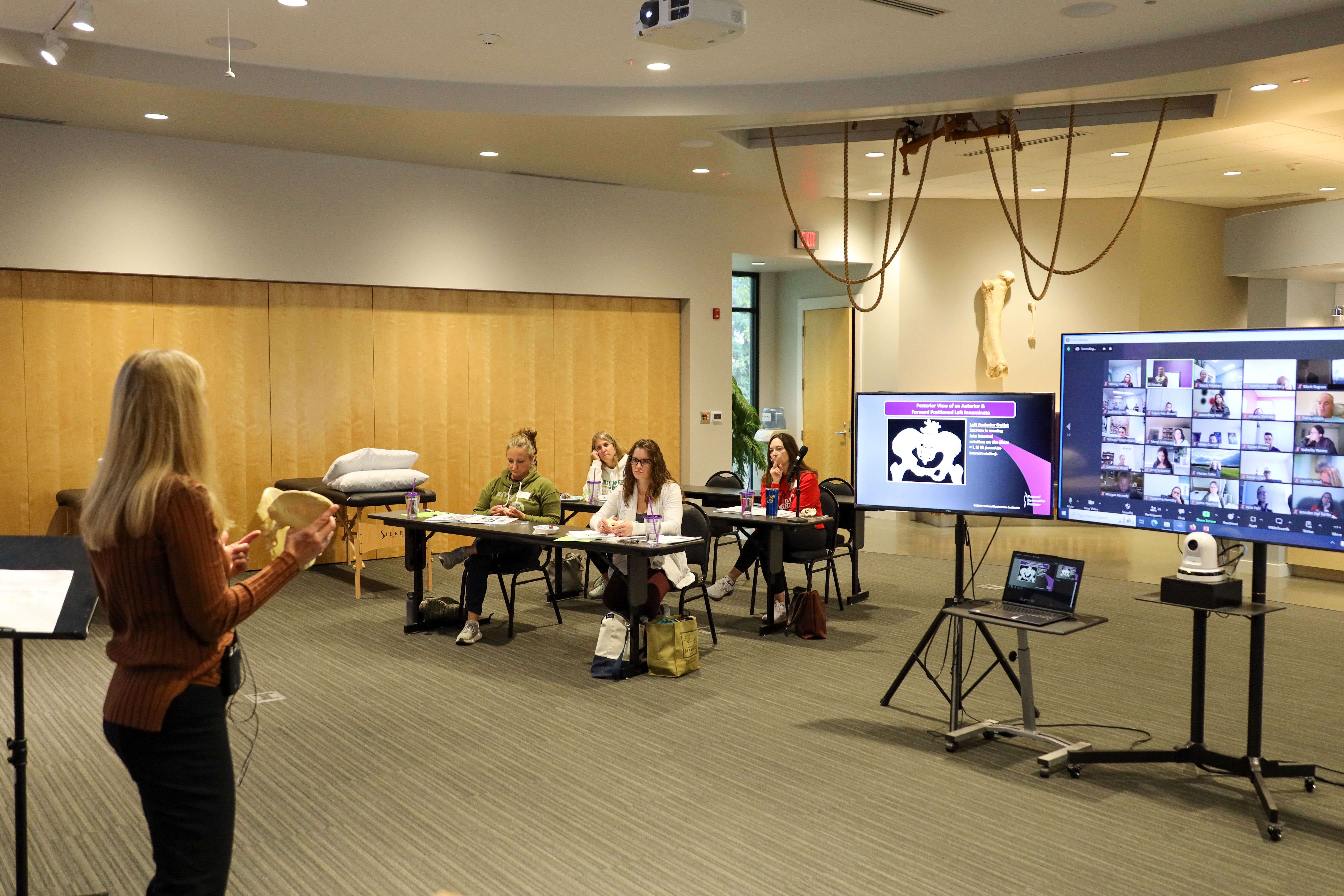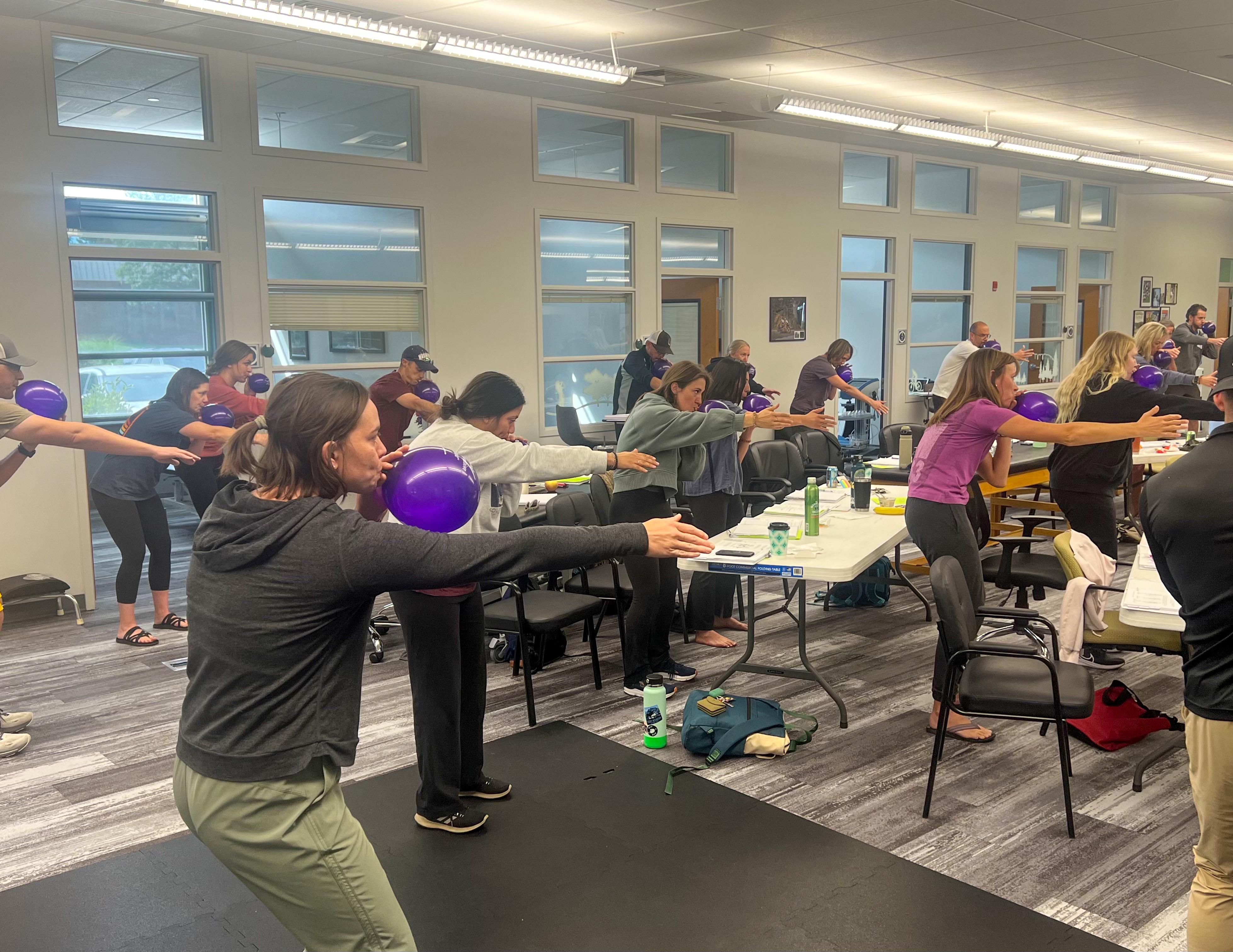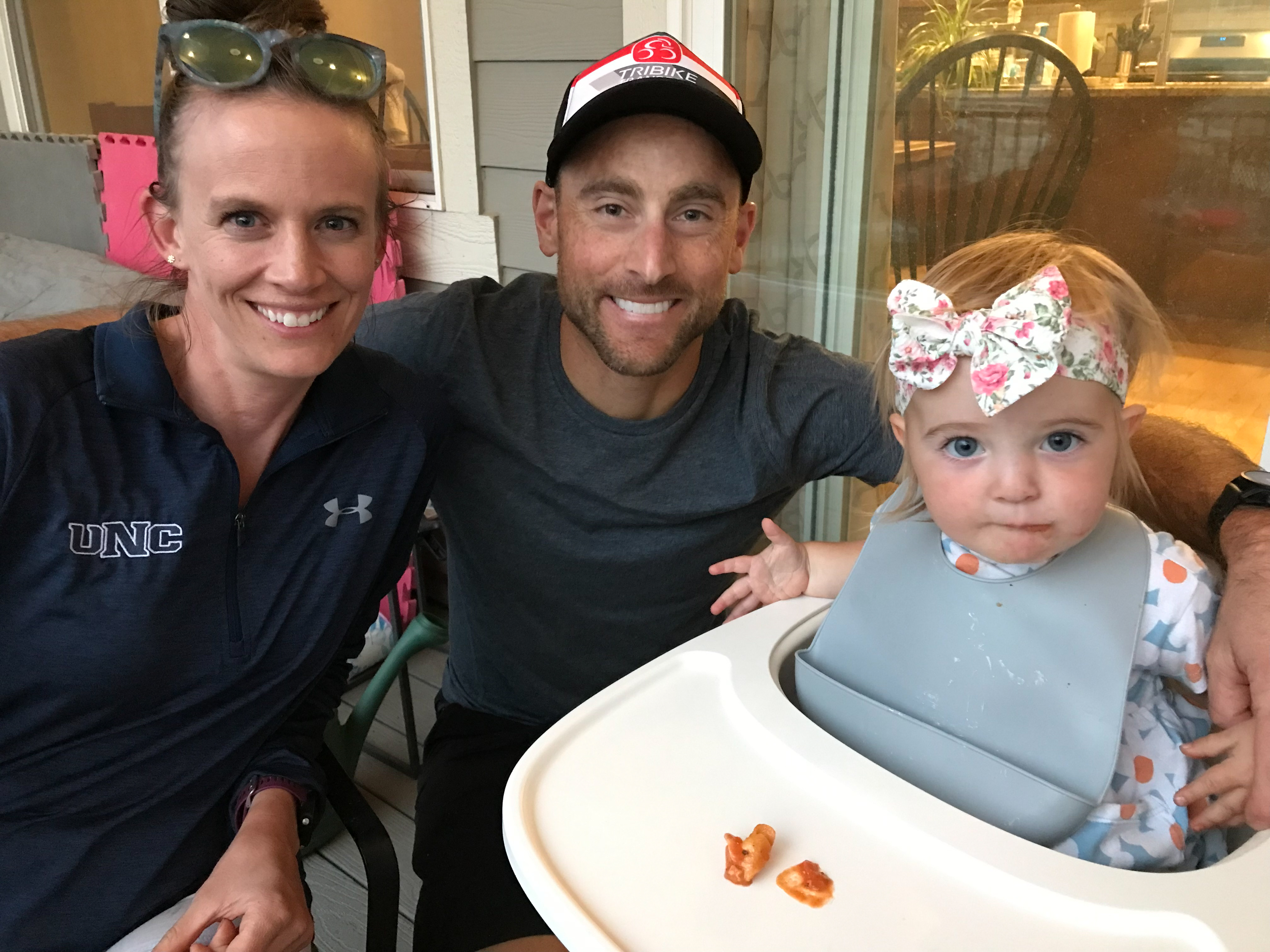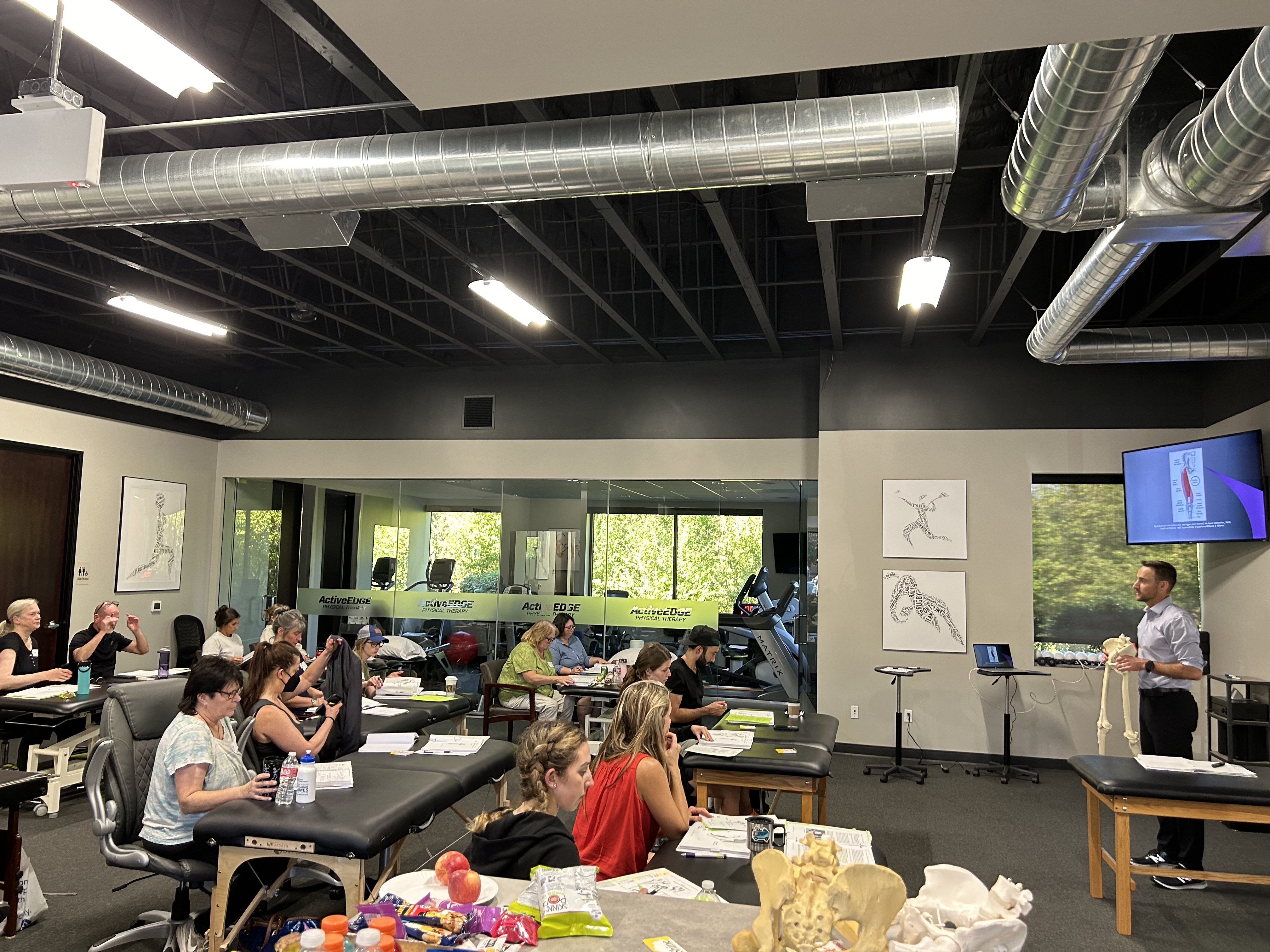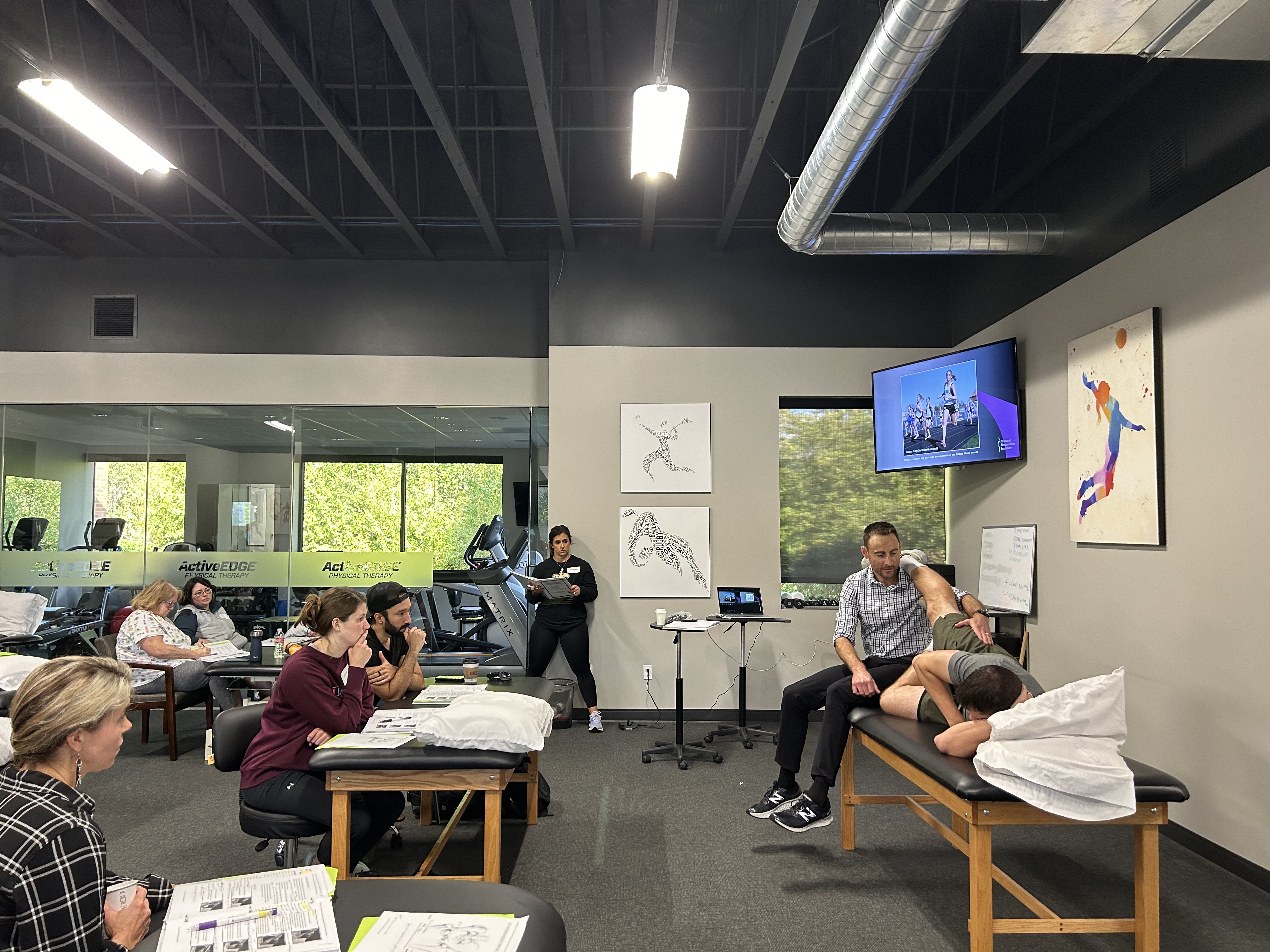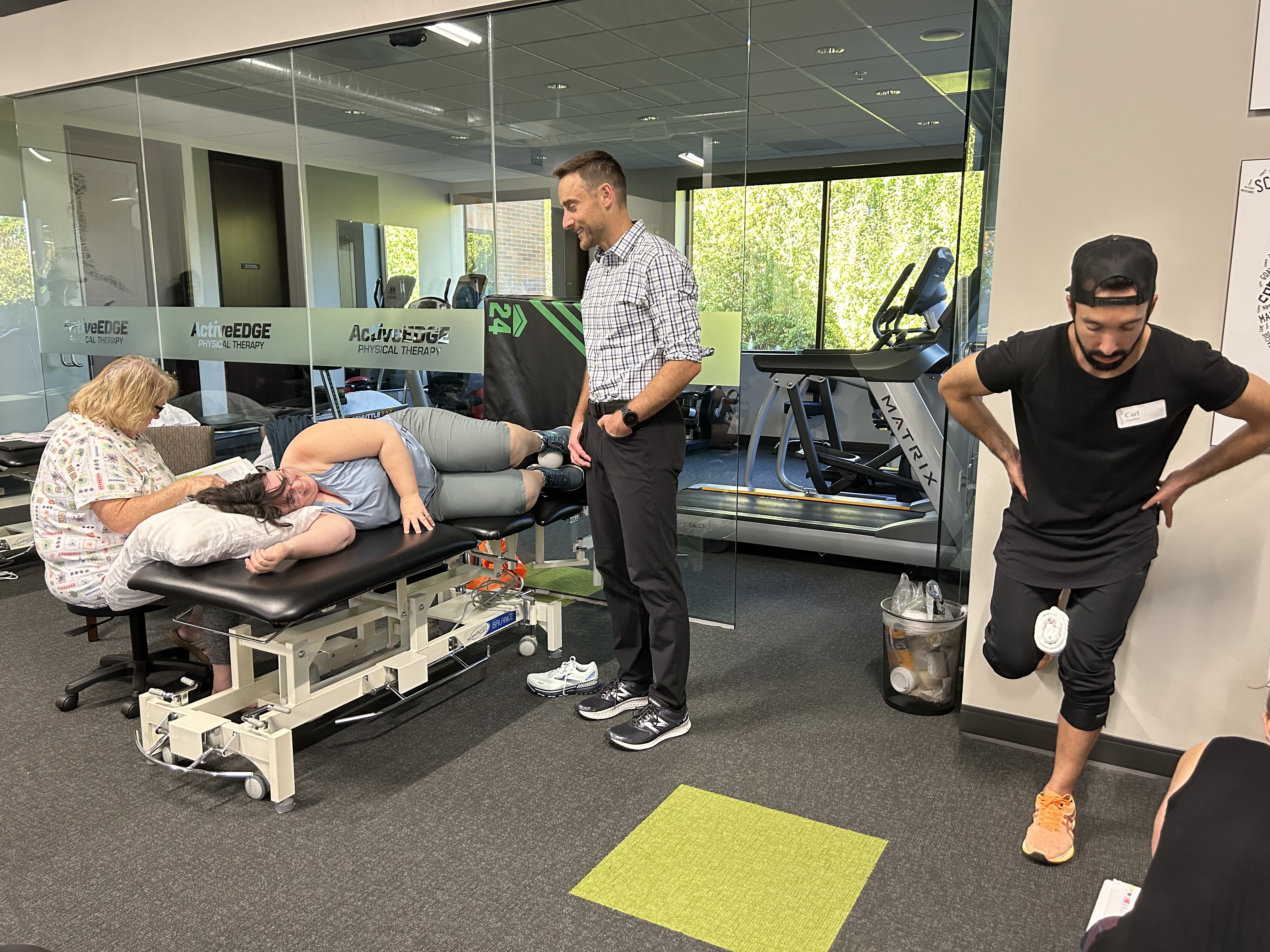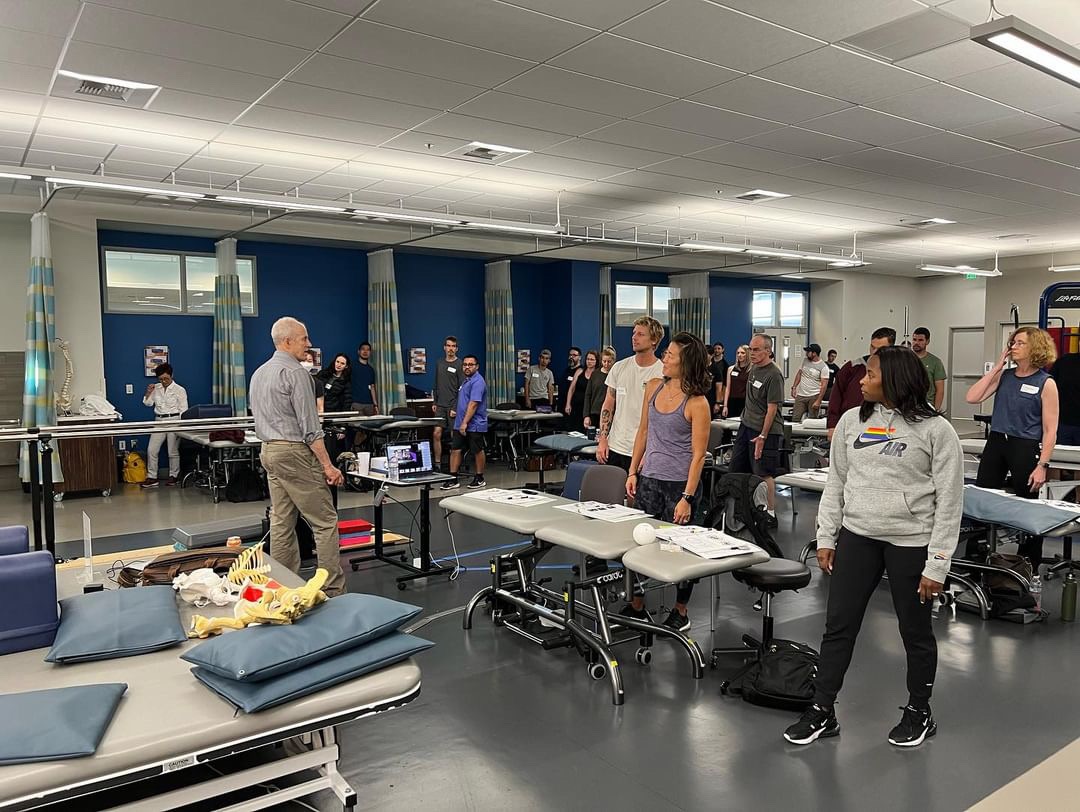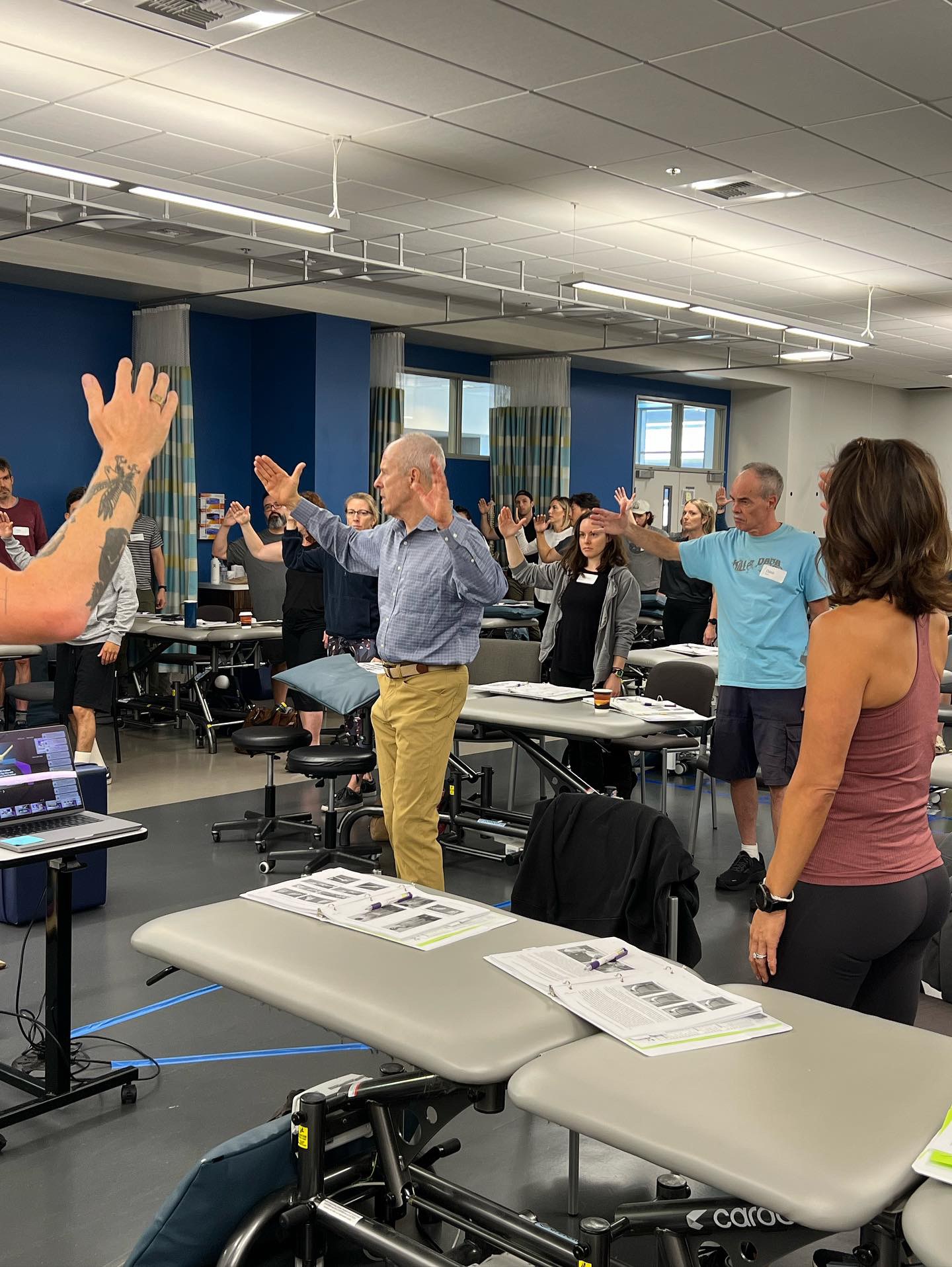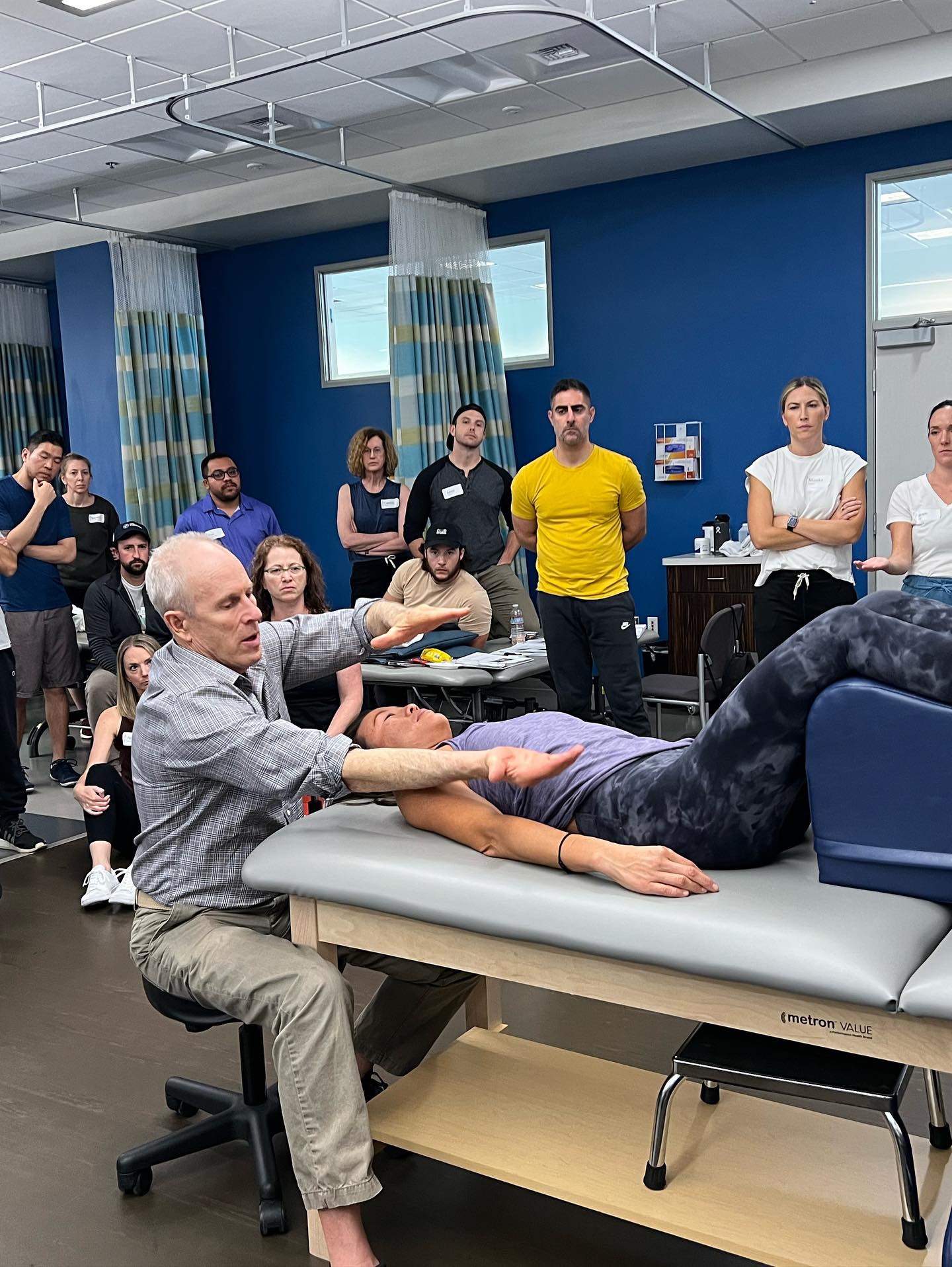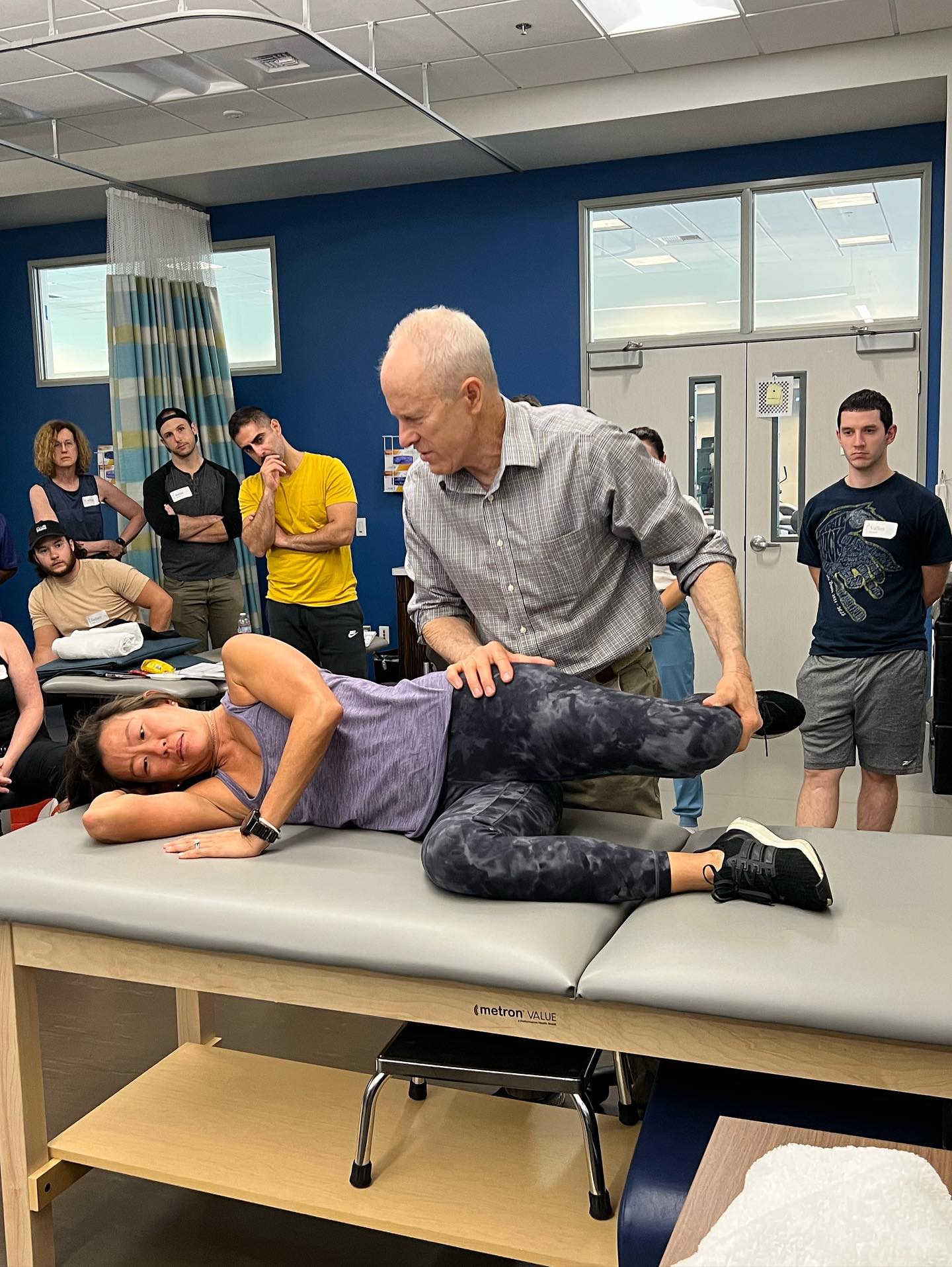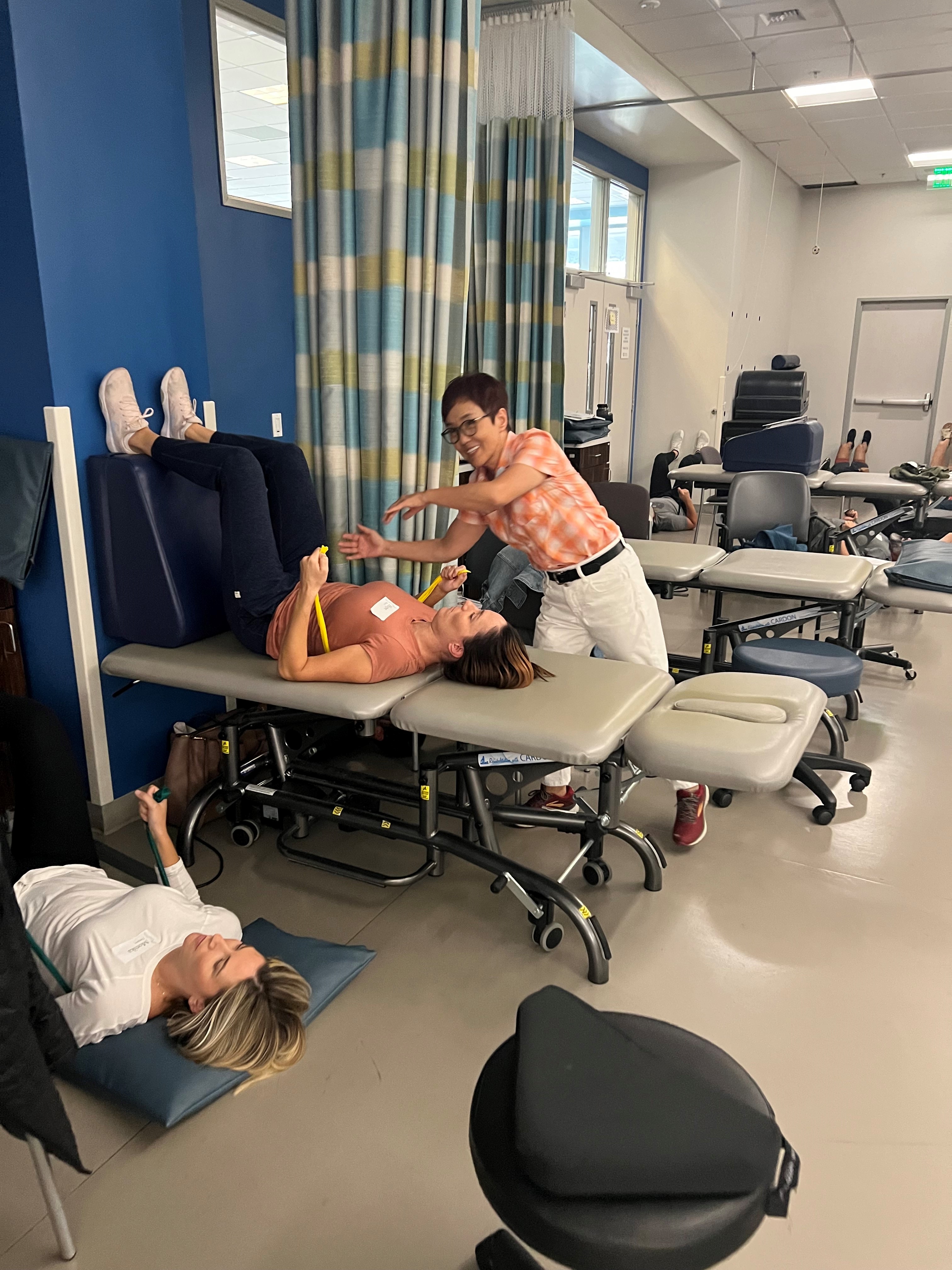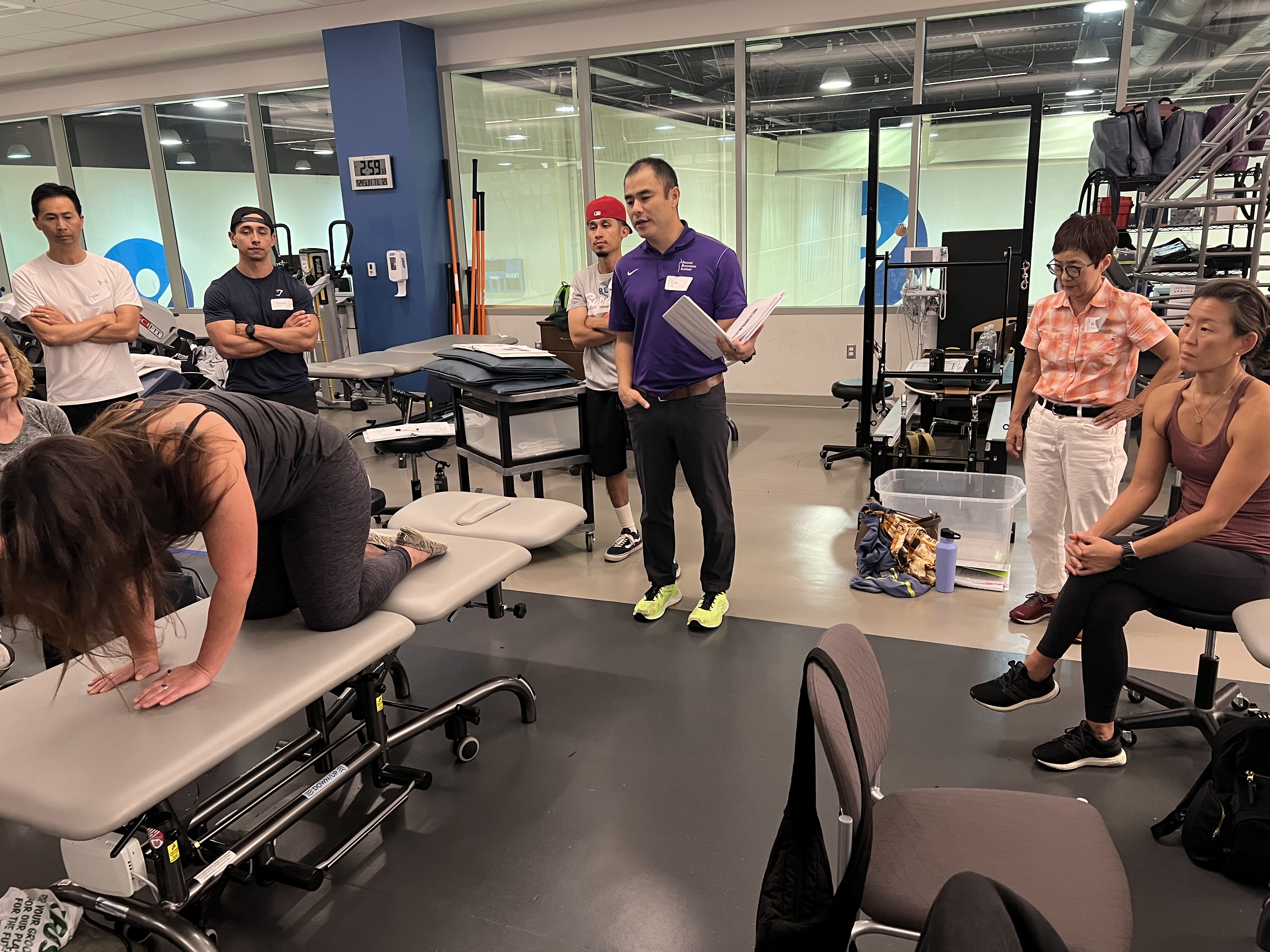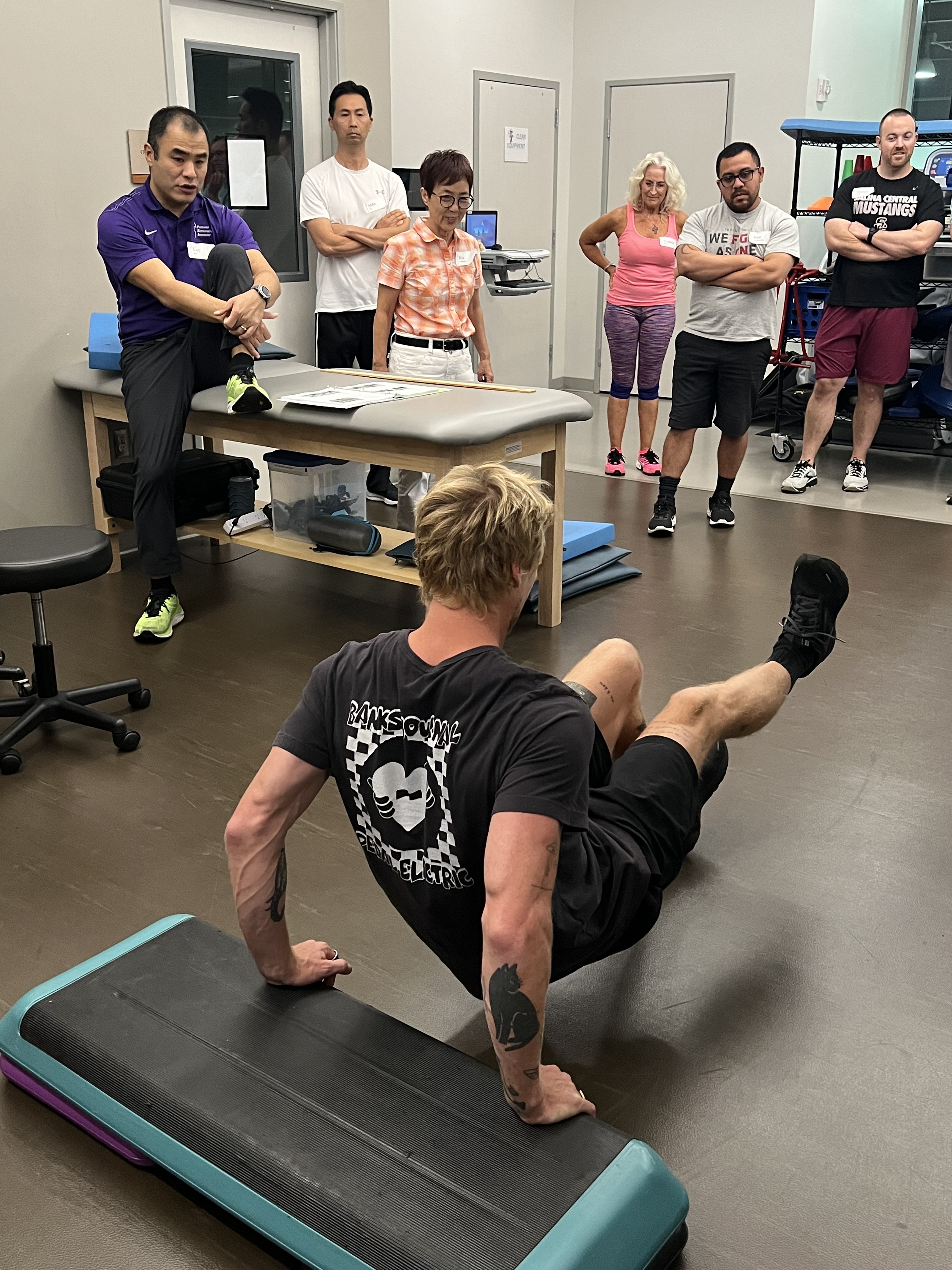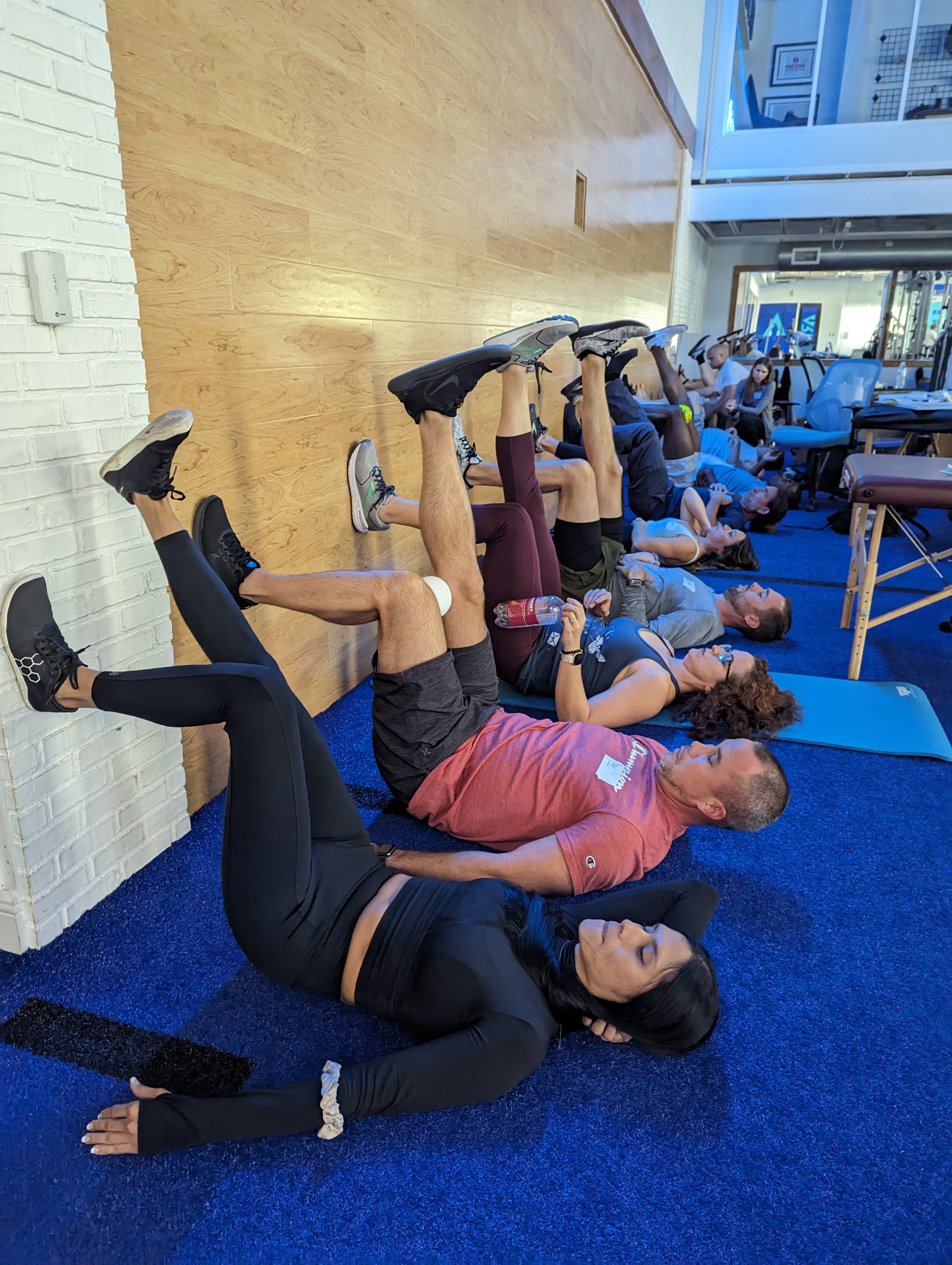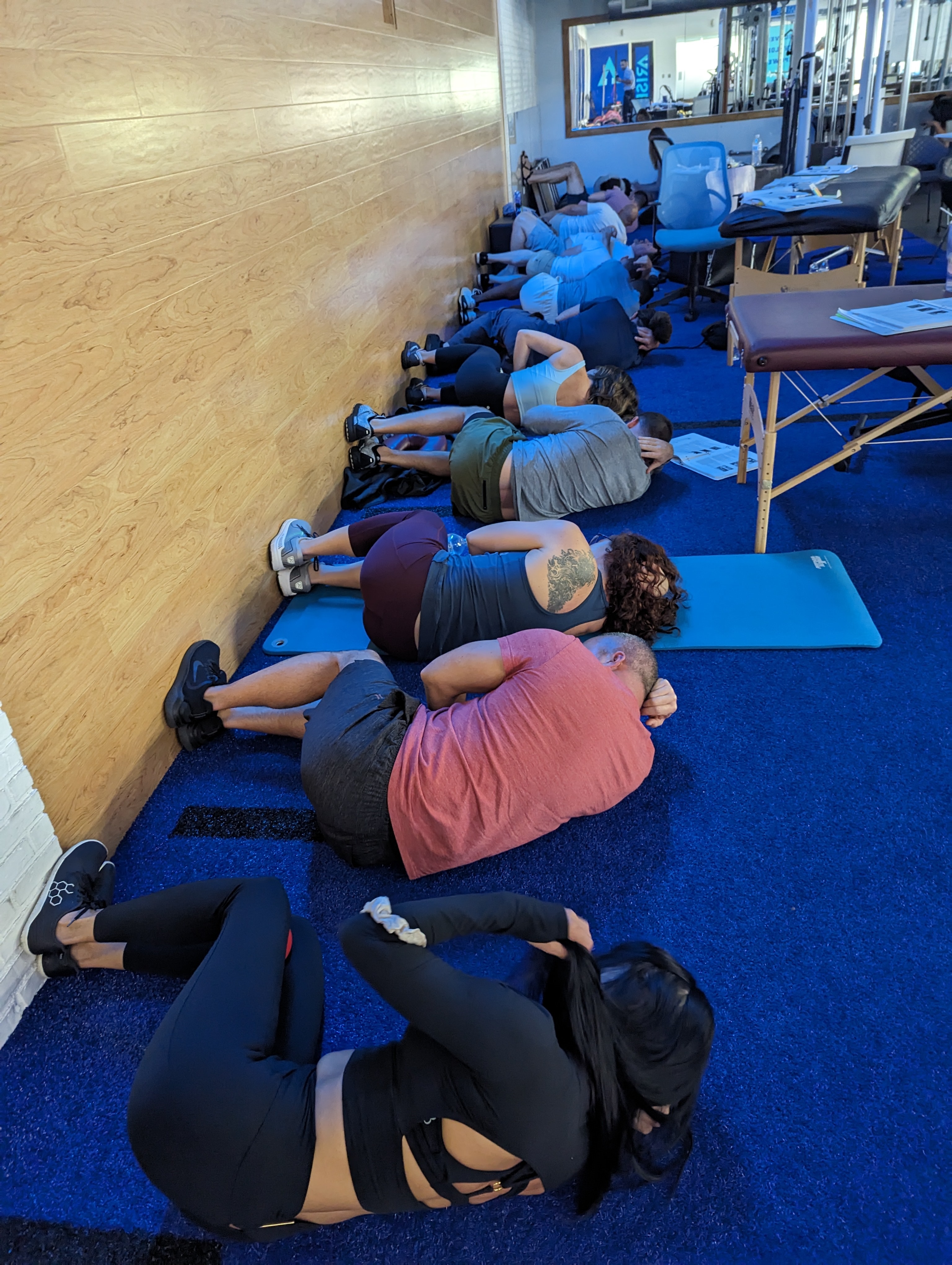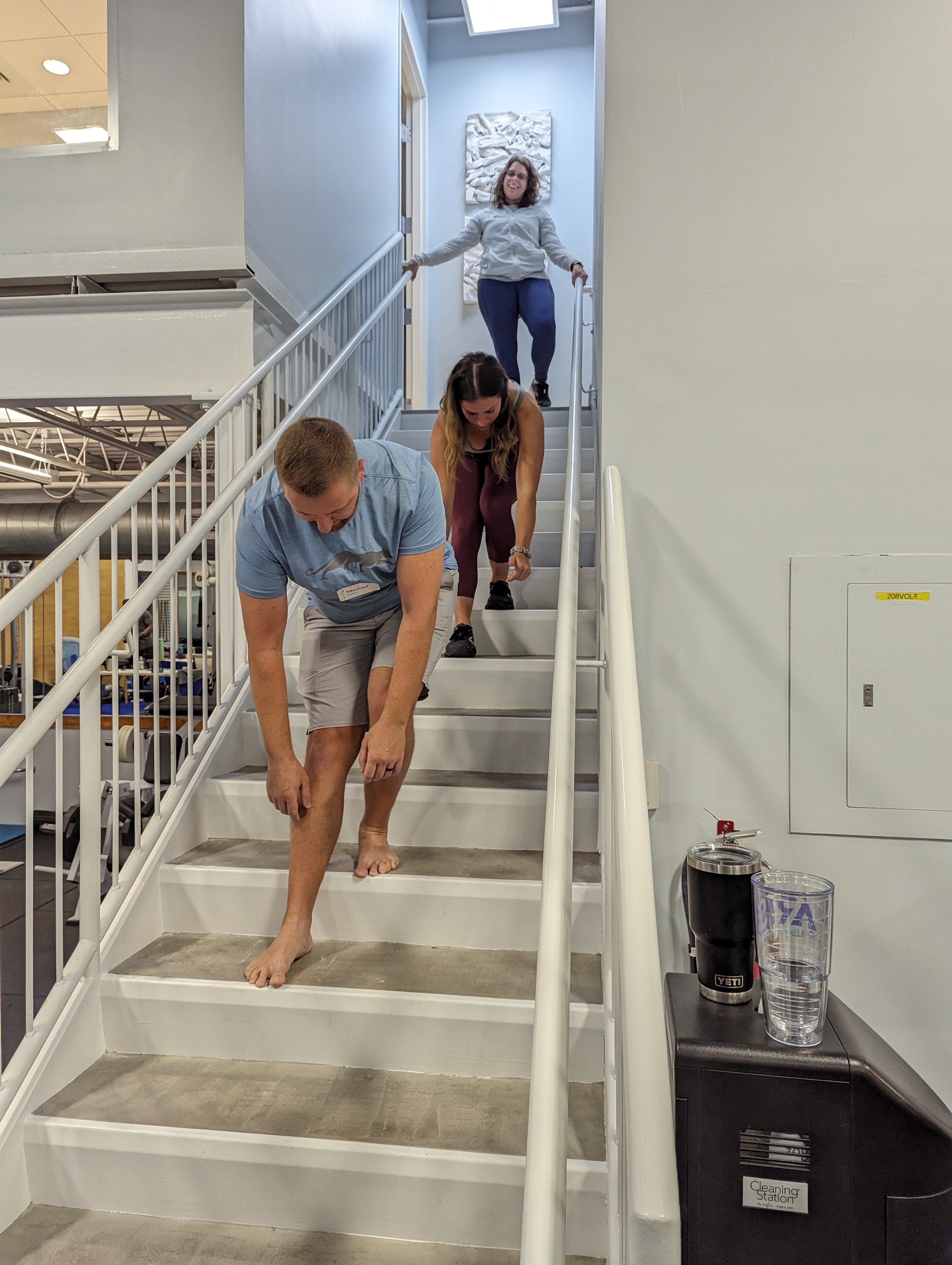Earlier this month, at our annual Advanced Integration course, we presented the PRI Director’s Dedication Award to two very deserving individuals who have had such a positive impact on our Institute. The PRI Directors Dedication Award was established in 2012 to recognize individuals’ ongoing dedication to their advancement in PRI. Susan Henning and Joe Belding were the very first recipients of the PRI Director’s Dedication Award, back in 2012. And this year, we were so honored to present the PRI Directors Award to two of their colleagues, Lisa Mangino and Jean Massé. To date, we have presented this award to 20 individuals and an award recognition plaque, which is pictured above, is displayed at the Postural Restoration Institute® in Lincoln, Nebraska, recognizing each of the PRI Directors Dedication Award recipients.
Lisa Mangino and Jean Massé are physical therapists and colleagues, in Chapel Hill, NC. Lisa began her PRI journey 14 years ago, taking her first course (Myokinematic Restoration) in 2009 at the University of Duke, where she was employed. Not long after, in 2010, Jean Massé, who was influenced by co-workers and PRC therapists Susan Henning and Joe Belding at Advance Physical Therapy, completed her first PRI course. She went on to complete PRC credentialing in 2013.
Jean is a nationally recognized Board-Certified Orthopedic Clinical Specialist (OCS) through the American Physical Therapy Association, since 1999. She continues to be a regular speaker at the UNC Chapel Hill Department of Physical Therapy on the subject of scoliosis and chronic pain.
She and Lisa obtained the preliminary C1 and Advanced C2 Schroth scoliosis certification in 2013. They have been treating young and older people with scoliosis since.
Lisa completed PRC credentialing in 2014, the same year that she began working at Advance Physical Therapy in Chapel Hill, with Susan, Joe and Jean. And, they have all worked alongside each other for the past 10 years.
Lisa’s passion is working with children, and as a pediatric therapist at Advance Physical Therapy, and the University of Duke Medical Center, she has touched the lives of so many children and families in her career. Her dedication to treating the child with neurological impairments led her to pursue certification in Neuro-Developmental Treatment (NDT), in 2009. Lisa obtained national recognition with her certification as a Board-Certified Pediatric Clinical Specialist (PCS) by the American Physical Therapy Association, in 2010.
Over the years, Lisa and Jean have attended 10+ Advanced Integration courses. In 2017, they began teaching day 4 of the Advanced Integration course, on Curvature of the Spine, alongside colleague and mentor Susan Henning. And it was such an honor to have them here teaching day 4 of this course again this year!
In addition to their involvement with day 4 of the Advanced Integration course, they also co-authored Chapter 7 titled “Postural Restoration: A Tri-Planar Asymmetrical Framework for Understanding, Assessing, and Treating Scoliosis and Other Spinal Dysfunctions”, in the InTech open access book, “Innovations in Spinal Deformities and Postural Disorders”, back in 2017 with Susan Henning. And a couple years later, Lisa, Jean and Susan founded STRATER Scoliosis Institute, where they are dedicated to the education of physical therapy professionals for safe and effective treatment of scoliosis. Over the past 5 years, they have worked closely with PRI to receive permission to teach PRI copyrighted material in the STRATER level 1 and 2 courses. Katie Piraino, who is a PRC therapist, attended the STRATER level 2 course last month and emailed me shortly after. Her exact words were, “I just took the Strater Scoliosis 2 course. Only 15 participants, there should be 100’s they are so good!”
In addition to this dedication and involvement with education related to PRI and scoliosis, Lisa has spent hundreds, if not thousands of hours on course development over the past several years, including the former PRI Integration for Pediatrics affiliate course, and today’s Human Evolution course, which was taught for the first time in September 2022….and although it’s a relatively new course, it is already catching fire with PRINation.
In 2020, Lisa was also invited as an adjunct faculty member at High Point University, to teach a semester long selective course for Physical Therapy students titled, “Postural Restoration® – An Overview of Asymmetrical Human Movement”.
Congratulations to Lisa and Jean on such a deserving award!











